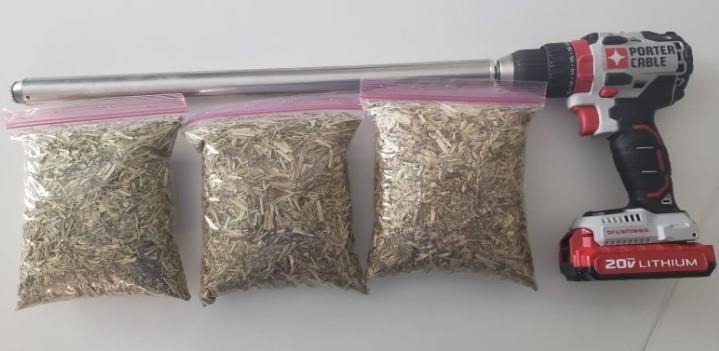Any time standard systems are suddenly and dramatically impacted by outside forces (unprecedented increase in nutrient prices in this case), it is important to pause and think through your situation to help minimize the negative impacts. The following are some thoughts on hay related situations that you may encounter this year.
Whether you buy it or produce it yourself, hay will likely cost more this year – protect your investment. Hay storage and feeding loss is always a financial killer but pause and think about how much more 25-40% loss/waste cost you when hay is $60-$70 a roll vs $35-$45. Probably not the best time to build a hay barn (construction materials are super high right now too) but the added aggravation of pallets and tarps, etc. should seem a bit more worthwhile. The same goes for any form of improved efficiency feeding system. Don’t waste hay by leaving unprotected rolls out where cattle waste half and eat half. See the links below for more details on preventing storage and feeding loss.
Understandably so, people will be looking for anything they can cut and roll this year that doesn’t have a huge fertilizer bill associated with it. I’ve already seen cool-season forages planted and minimally fertilized as cover crops harvested for hay. I suspect crop residues like peanut vines and corn stalks will also be popular options this year. In addition to these alternative forage crops I think folks will be looking for alternative locations to get a “free cutting of hay” – even unfertilized grass will grow some if you give it long enough. All these scenarios give me great concern about forage quality. Excessive amounts of dirt in peanut vines, weeds from unmanaged fields, and especially lower than expected nutritional values are all potential issues.
I always recommend having a laboratory analysis performed on your hay to determine the nutritional value (CP and TDN). This practice will be increasingly important this year as we move away from business as usual. I’m not implying that this is the year to be picky about hay, only that it is crucial to know what you’ve got and how to best use it. Waiting until animal performance declines to find out you have very low-quality hay only further complicates the issue. It’s better to know in advance and be able to plan accordingly. Contact your County Agent about collecting and submitting hay samples for nutritional analysis.

Recently collected samples of cool-season grass hay and the drill & probe used to collect them. Samples will be sent to the lab to have there nutritional value analyzed.
Photo Credit: Mark Mauldin
Hay Producers
Harvesting a hay crop removes a vast amount of nutrients from the soil. Continuing to harvest hay without replenishing soil nutrients will have long term consequences for the field. It may be tempting to only apply Nitrogen fertilizer (no P or K) this year to save money. This is not advisable as it will severely weaken stands over time. Obviously, this is not the year to over fertilize. Let a soil sample tell you exactly how much of each nutrient you need. If this seems financially impossible, apply the recommended rates to only as much land is necessary to produce the amount of hay you will need for this winter. Be sure to fertilize your best, most productive ground and let any marginal areas rest this year. Cutting acreage fertilized is better than cutting the rate applied.
It will not be fun but sit down and calculate what kind of investment you will have in each roll of hay. Fertilizer is not the only price that has risen – do not forget about $5 farm diesel and $300/roll net wrap. Know how much a roll really costs this year. Then you can decide how much to charge, if you are able to sell hay and so you can effectively compare hay to other feedstuffs in terms of $/lbs. of protein and/or energy.
Hay Buyers
Do not wait until the fall to try to find hay. Talk to potential hay suppliers now and be prepared for the conversation to be somewhat different than it has been in the past. I feel like availability is going to be the driver of most conversations. However, if you have options be sure to look at value (considering nutritional quality) and not just price. Given the points previously discussed I would be very leery of any “cheap hay.”
When closely examined, the economics of hay are quite frequently less than ideal. This year they will be downright crazy but when the price and availability of other feedstuffs are considered I think hay will continue to be a substantial part of most winter-feeding programs in the area. Gather information, think about all available options, and use all available resources to help you make decisions as you try to make the most of what is shaping up to be a pretty rotten situation.
Source : ufl.edu